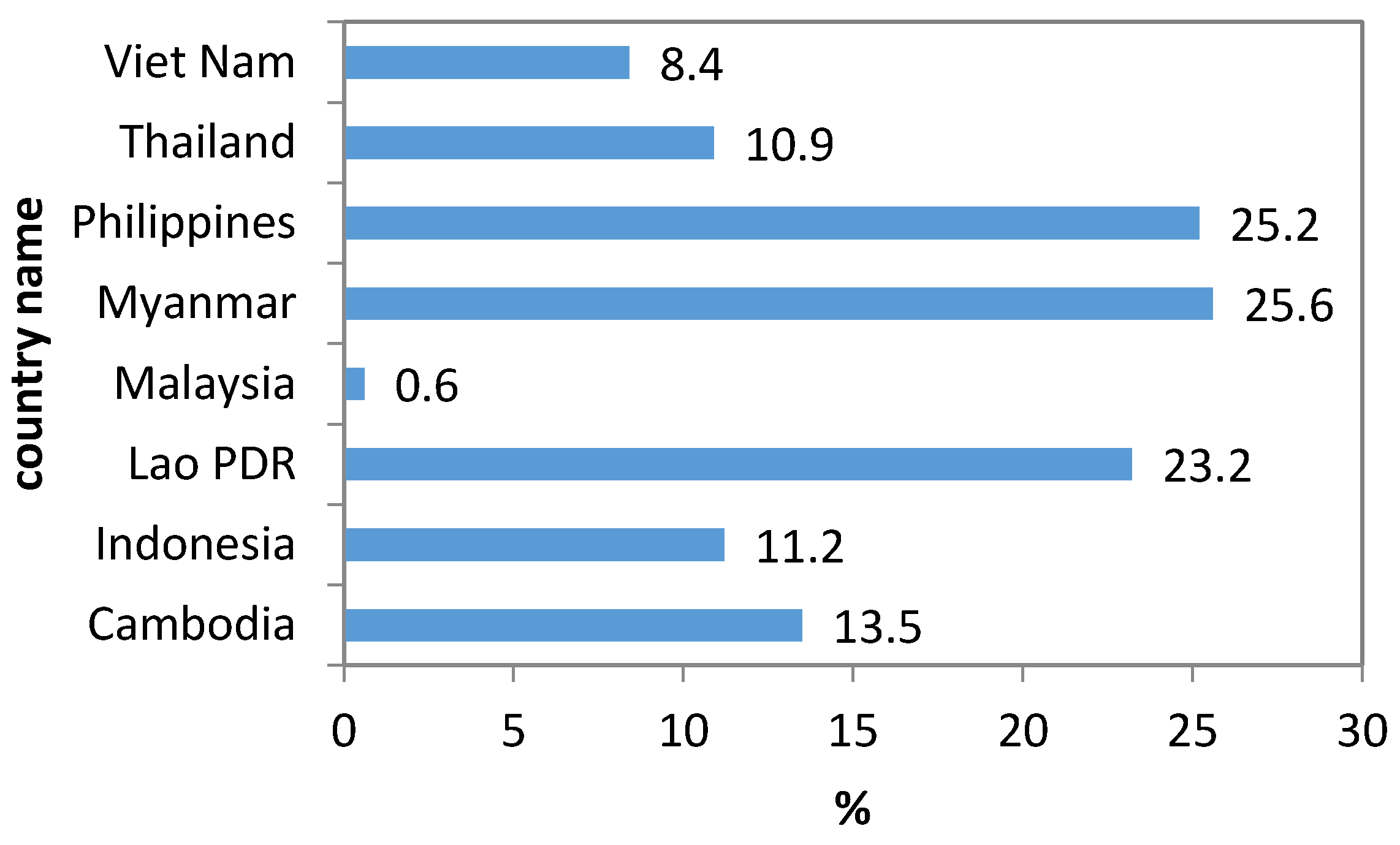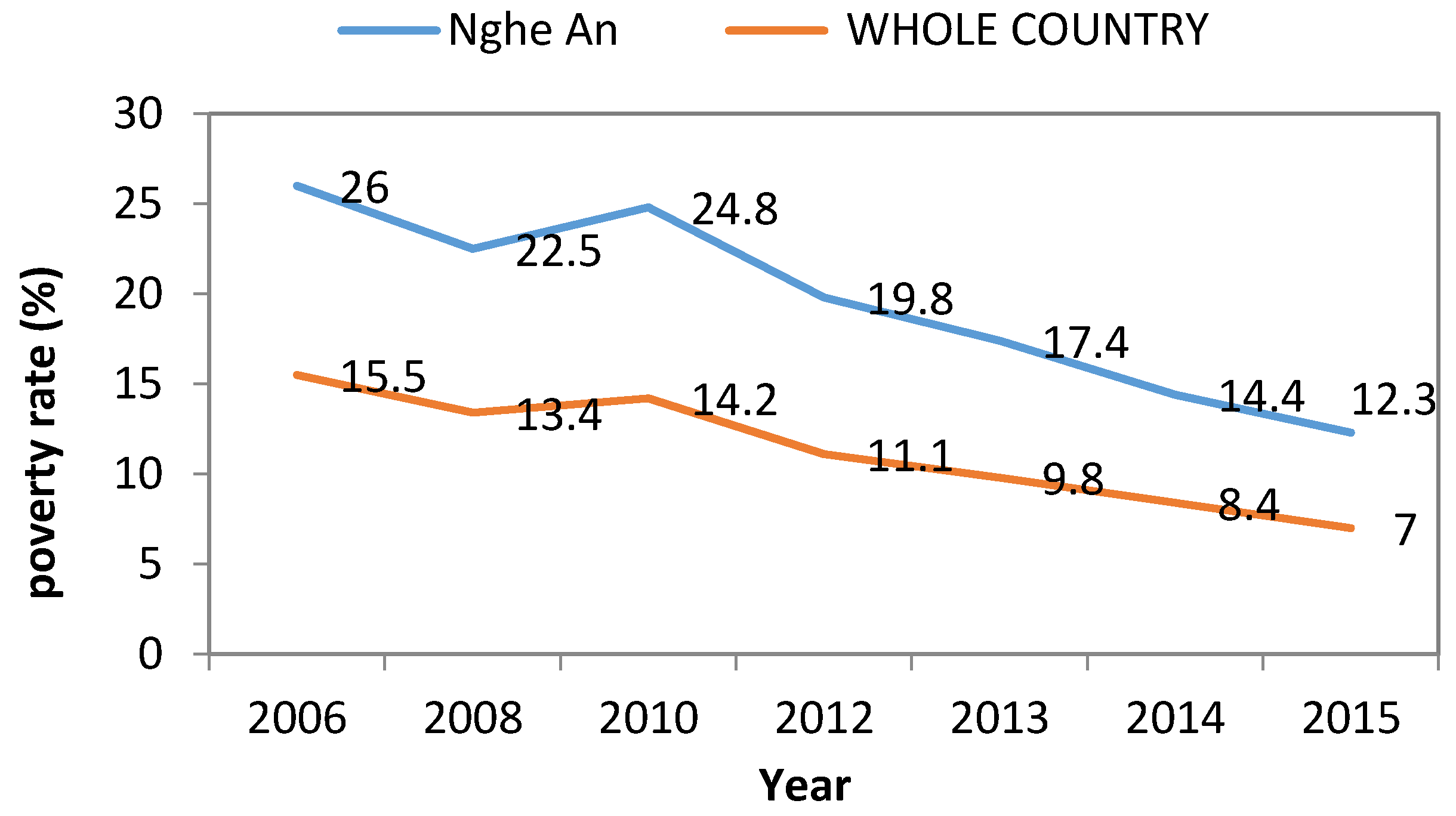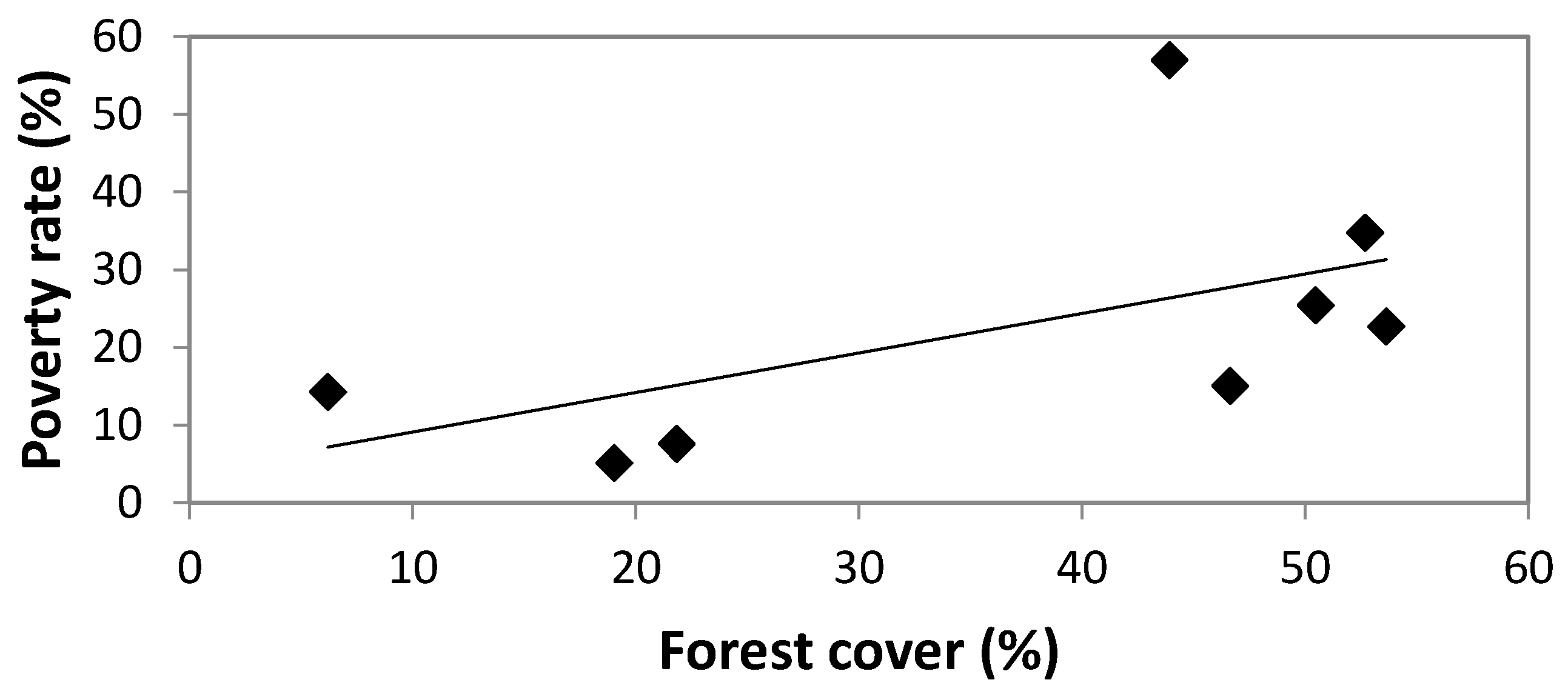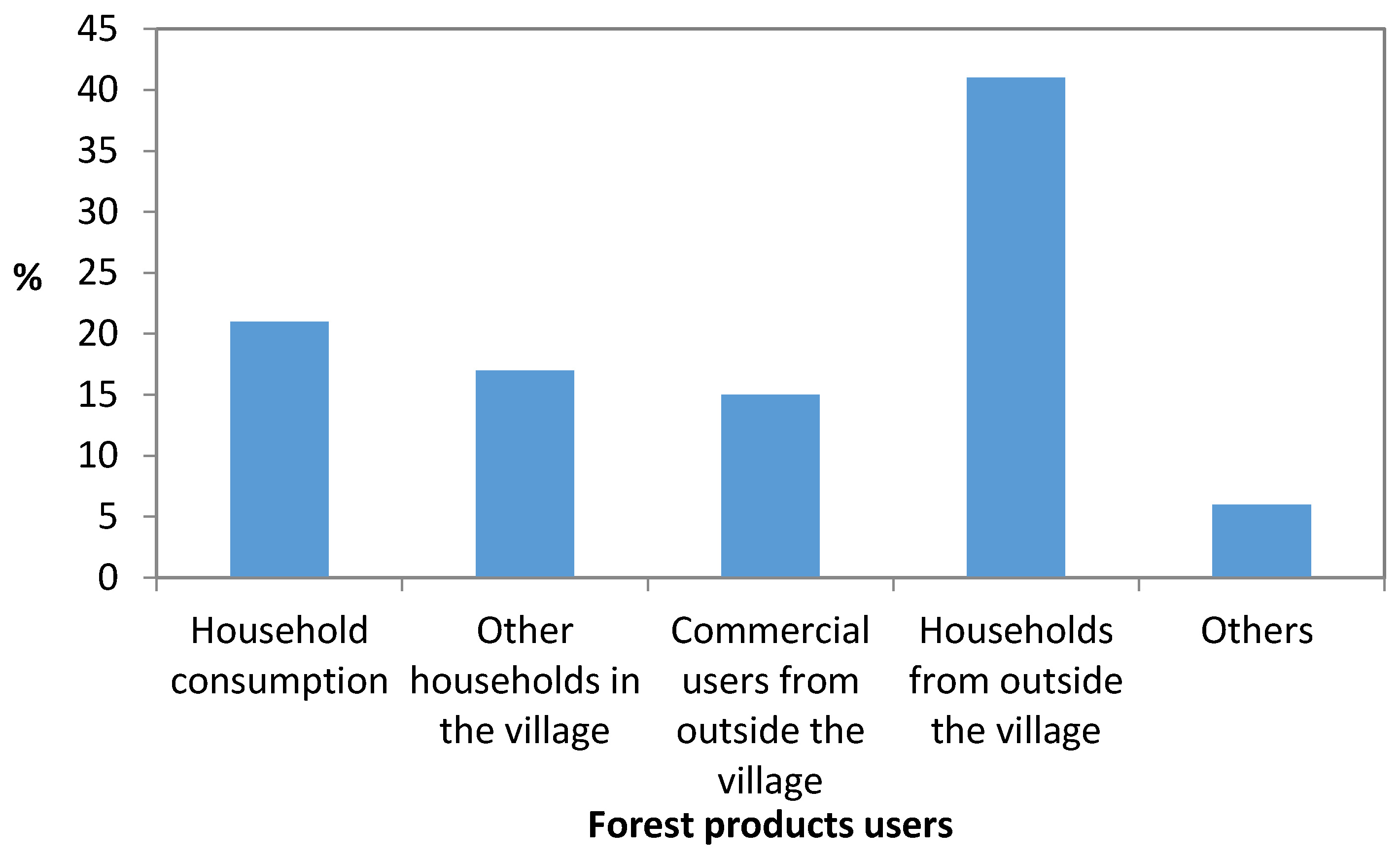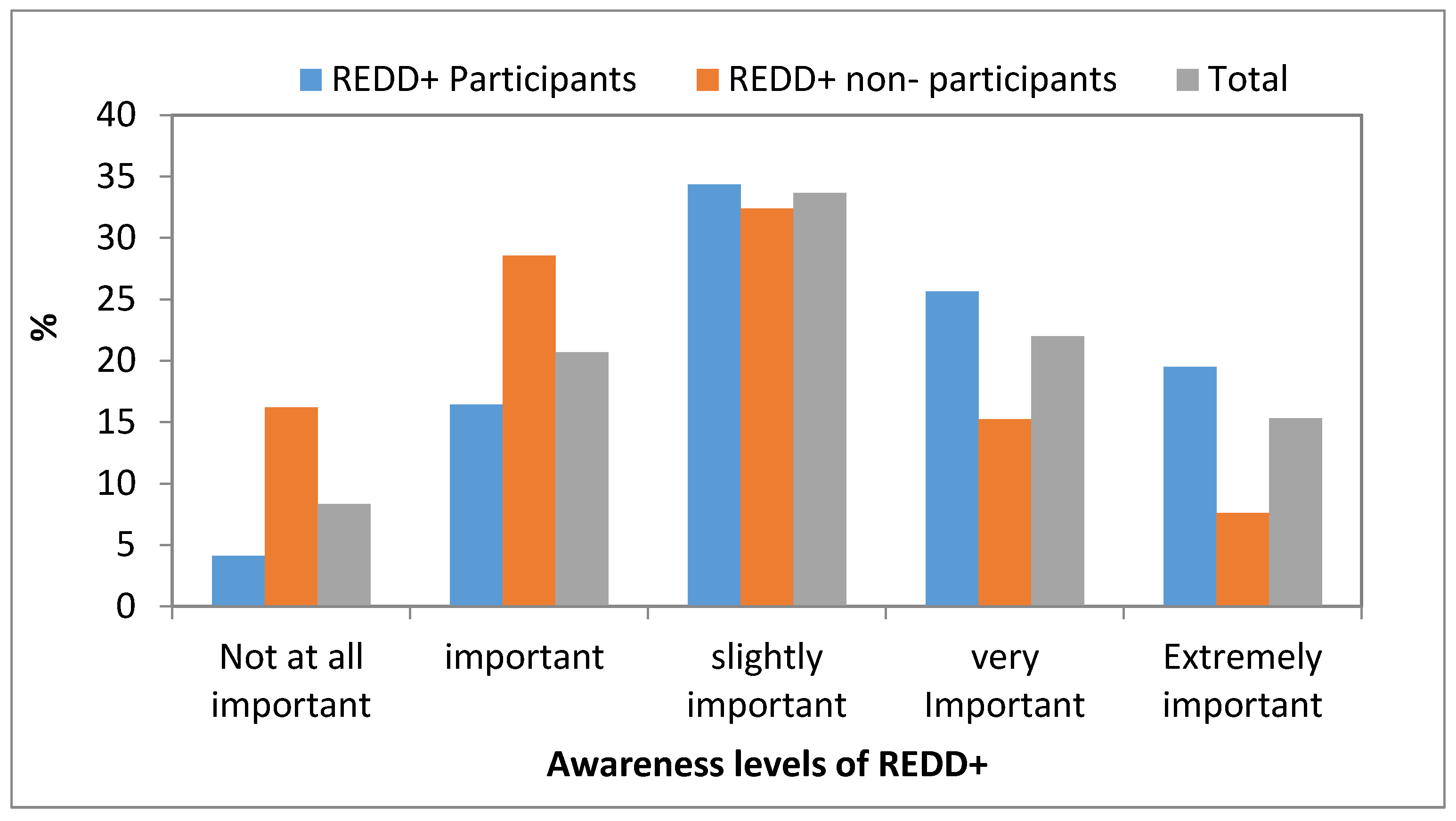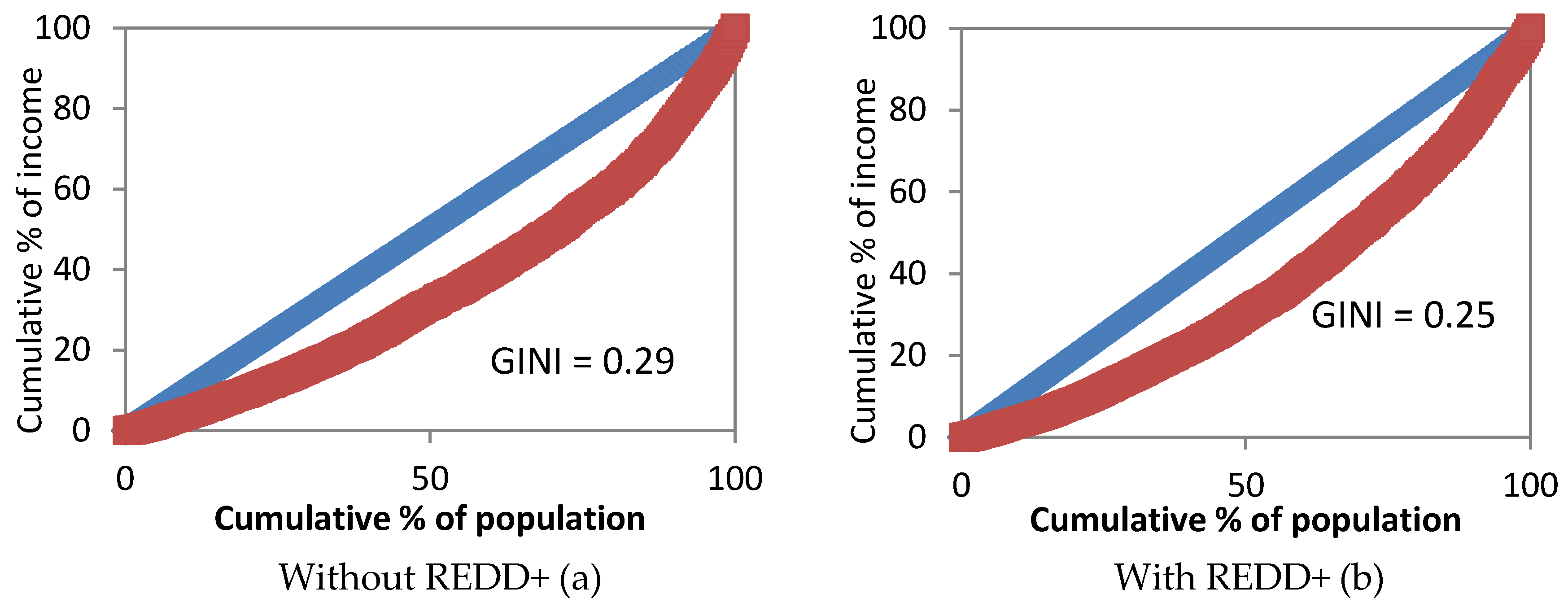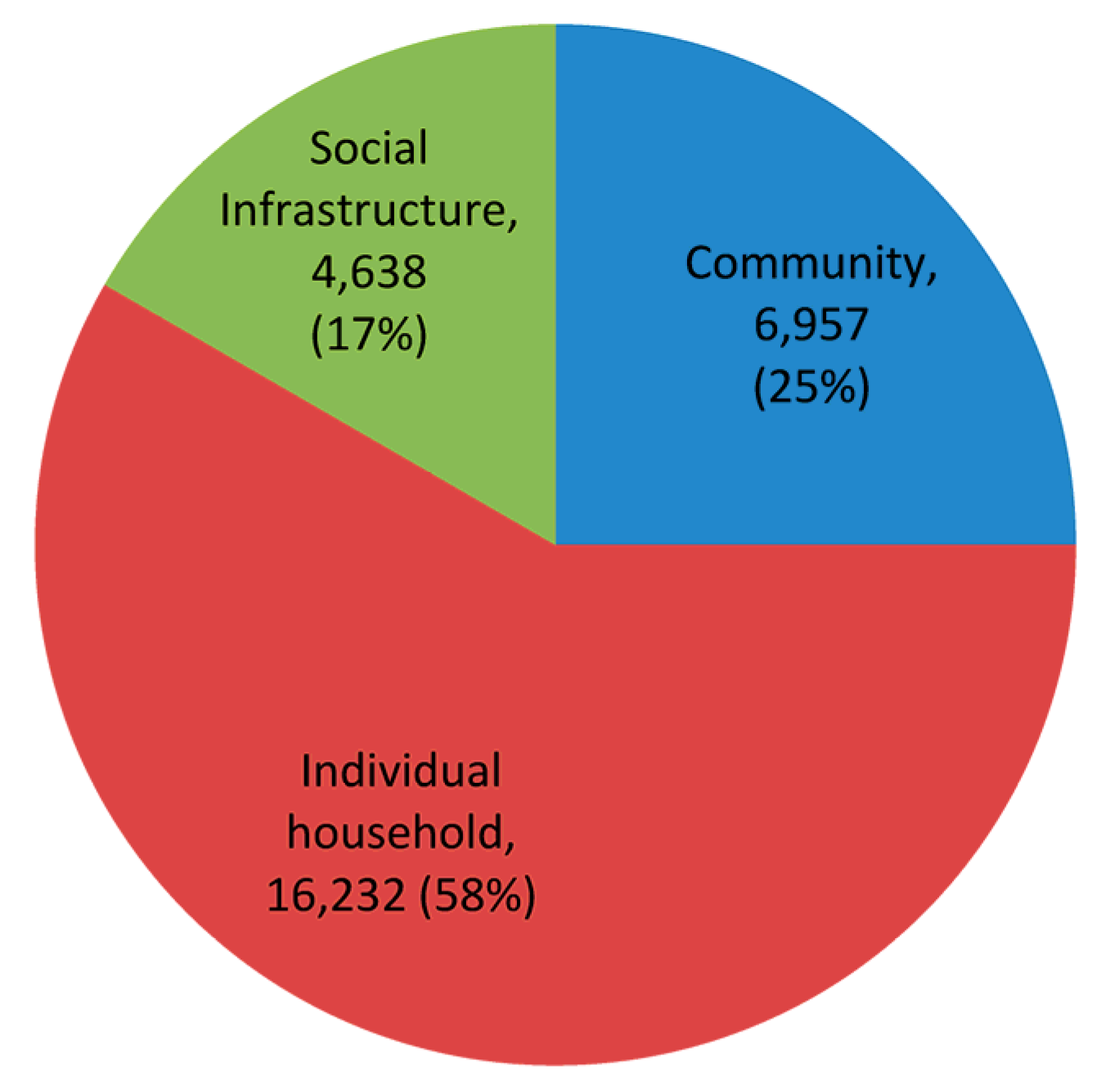Figure 1.
Location of the study sites in Luc Da and Chi Khe communes.
Figure 1.
Location of the study sites in Luc Da and Chi Khe communes.
Figure 2.
Percentage of population below the national poverty line in Vietnam and other Asian countries in 2014. Source: ADB data from 2014 [
10].
Figure 2.
Percentage of population below the national poverty line in Vietnam and other Asian countries in 2014. Source: ADB data from 2014 [
10].
Figure 3.
Poverty trend in Nghe An Province and in the Whole country, Source: GSO data from 2016 [
13].
Figure 3.
Poverty trend in Nghe An Province and in the Whole country, Source: GSO data from 2016 [
13].
Figure 4.
Relationship between forest cover rate and poverty rate in Vietnam. Source: GSO data from 2016 [
13].
Figure 4.
Relationship between forest cover rate and poverty rate in Vietnam. Source: GSO data from 2016 [
13].
Figure 5.
Main forest users in Con Cuong District, Nghe An Province, 2016.
Figure 5.
Main forest users in Con Cuong District, Nghe An Province, 2016.
Figure 6.
Levels of awareness of REDD+ effects on climate change and the environment of respondents, Con Cuong District, Nghe An Province, 2016.
Figure 6.
Levels of awareness of REDD+ effects on climate change and the environment of respondents, Con Cuong District, Nghe An Province, 2016.
Figure 7.
Lorenz curve of farmers in Con Cuong District, Nghe An Province. (a) Without REDD+; (b) With REDD+.
Figure 7.
Lorenz curve of farmers in Con Cuong District, Nghe An Province. (a) Without REDD+; (b) With REDD+.
Figure 8.
Suggestions on distribution of funds of carbon payments to local villagers.
Figure 8.
Suggestions on distribution of funds of carbon payments to local villagers.
Table 1.
Socio demographic characteristics of Con Cuong District, Nghe An Province, Vietnam, 2016.
Table 1.
Socio demographic characteristics of Con Cuong District, Nghe An Province, Vietnam, 2016.
| Items | Whole District |
|---|
| | (No. of People) | (%) |
|---|
| Total | 69,773 | 100 |
| Distribution by gender | | |
| Male | 34,852 | 49.95 |
| Female | 34,921 | 50.05 |
| Total labor | 43,734 | 100.00 |
| Distribution by gender | | |
| Male | 22,304 | 51.00 |
| Female | 21,430 | 49.00 |
| Distribution by area | | |
| Rural | 40,541 | 92.70 |
| Urban | 3193 | 7.30 |
| Total households | 15,820 | |
Table 2.
Current land use of Con Cuong District, Nghe An Province, 2016.
Table 2.
Current land use of Con Cuong District, Nghe An Province, 2016.
| | Land Use Type | Area (ha) | (%) |
|---|
| | Total natural land | 173,831.12 | 100 |
| I | Agricultural land area | 164,460.42 | 94.61 |
| 1 | Agricultural production land | 10,145.38 | 6.17 |
| 1.1 | Land for annual crops | 7275.61 | 4.42 |
| 1.2 | Long-term tree plantations | 2869.77 | 1.74 |
| 2 | Forestland | 154,262.63 | 93.80 |
| 2.1 | Production land | 60,859.80 | 37.01 |
| 2.2 | Protected forest | 19,134.00 | 11.63 |
| 2.3 | Special-use forest | 74,268.83 | 45.16 |
| 3 | Aquaculture land | 52.41 | 0.03 |
| II | Nonagricultural land | 2942.98 | 1.69 |
| III | Unused land | 6427.72 | 3.70 |
Table 3.
Poverty line of Vietnam in rural and urban areas.
Table 3.
Poverty line of Vietnam in rural and urban areas.
| | Income per Capita per Month |
|---|
| Rural Areas | Urban Areas |
|---|
| Poor | ≤VND 400,000 (≤USD 19) | ≤VND 500,000 (≤USD 24) |
| Near poor | VND 401,000–520,000 ($20 to $25) | VND 501,000–650,000 (USD 25–31) |
Table 4.
Linkage of forest cover and poverty in Vietnam, 2000 to 2014.
Table 4.
Linkage of forest cover and poverty in Vietnam, 2000 to 2014.
| Region | 2000 | 2012 | 2014 |
|---|
| Forest Cover Rate (%) | Poverty Rate (%) | Forest Cover Rate (%) | Poverty Rate (%) | Forest Cover Rate (%) | Poverty Rate (%) |
|---|
| Northeast | 52.5 | 37.7 | 56.2 | 33.5 | 49.36 | 31.2 |
| Northwest | 42.2 | 60.1 | 44.6 | 58.7 | 44.95 | 53.2 |
| Red River Delta | 20.6 | 11.4 | 21.2 | 7.4 | 23.7 | 4 |
| North Central | 54.4 | 28.4 | 56 | 21.2 | 50.5 | 18.5 |
| South Central Coast | 43.3 | 18.1 | 44.7 | 15.3 | 51.9 | 11.8 |
| Central Highlands | 52.5 | 32.8 | 53.1 | 29.7 | 45.8 | 13.8 |
| Southeast | 17.2 | 8.6 | 20 | 5.8 | 19.9 | 1 |
| Mekong Delta | 6.6 | 18.7 | 6.1 | 16.2 | 5.9 | 7.9 |
| National | 39.5 | 20.7 | 40.7 | 11.2 | 40.4 | 8.4 |
Table 5.
Demographic characteristics of respondent households in Con Cuong District, Nghe An Province, 2016.
Table 5.
Demographic characteristics of respondent households in Con Cuong District, Nghe An Province, 2016.
| Items | Chi Khe | Luc Da | Total |
|---|
| R | N-R | DIFF | R | N-R | DIFF | R | N-R | DIFF |
|---|
| Age of respondents (years) | 46.4 | 47.6 | 1.21 ns | 41.2 | 45.97 | 4.78 * | 43.94 | 46.70 | 2.76 * |
| Educational level of respondents (year) | 4.7 | 4.8 | 0.01 ns | 6.4 | 6.19 | 0.24 ns | 5.52 | 5.56 | 0.04 ns |
| Household sizes (person) | 4.8 | 4.8 | 0.00 ns | 4.7 | 4.52 | 0.21 ns | 4.79 | 4.67 | 0.12 ns |
| Labor supply (persons) | 2.7 | 2.3 | 0.45 *** | 2.6 | 2.48 | 0.14 ns | 2.68 | 2.39 | 0.29 ** |
| Income per capita/year (1000 VND) | 3598 | 3212 | 386 ns | 3495 | 3507 | 12 ns | 3549 | 3375 | 174 ns |
Table 6.
Income sources of respondent households in Con Cuong District, Nghe An Province, 2016 (Unit: million VND/year).
Table 6.
Income sources of respondent households in Con Cuong District, Nghe An Province, 2016 (Unit: million VND/year).
| Sources of Income | Chi Khe | Luc Da | Total |
|---|
| R | N-R | DIFF | R | N-R | DIFF | R | N-R | DIFF |
|---|
| Annual crop income | 4.55 | 5.59 | 1.04 ns | 4.45 | 3.8 | 0.64 ns | 4.5 | 4.6 | 0.09 ns |
| Livestock income | 4.72 | 4.25 | 0.47 ns | 5.00 | 4.77 | 0.22 ns | 4.85 | 4.54 | 0.3 ns |
| Income from forest | 4.35 | 2.76 | 1.73 *** | 3.29 | 2.85 | 0.46 * | 3.85 | 2.81 | 1.13 *** |
| Off-farm income | 3.01 | 2.4 | 0.60 ns | 2.68 | 3.06 | 0.38 ns | 2.85 | 2.77 | 0.08 ns |
| Total income | 16.63 | 15.01 | 1.62 ns | 15.42 | 14.48 | 0.94 ns | 16.06 | 14.72 | 1.34 ns |
Table 7.
Source of income by household type, Con Cuong District, Nghe An Province, 2016.
Table 7.
Source of income by household type, Con Cuong District, Nghe An Province, 2016.
| Items | Household Status |
|---|
| Non-Poor (Million VND) | % | Poor (Million VND) | % | DIFF |
|---|
| Crop income | 5.719 | 26.8 | 3.449 | 33.2 | 2.27 *** |
| Livestock income | 6.385 | 29.9 | 3.224 | 31.0 | 3.16 *** |
| Income from forest | 4.151 | 19.4 | 2.989 | 28.8 | 1.16 *** |
| Off-farm income | 5.087 | 23.8 | 0.731 | 7.0 | 4.33 *** |
| Total income | 21.27 | 100.0 | 10.34 | 100.0 | 10.94 *** |
Table 8.
Correlation between income from forest products and household type, Con Cuong District, Nghe An Province, 2016.
Table 8.
Correlation between income from forest products and household type, Con Cuong District, Nghe An Province, 2016.
| | | Poor | Income from Forests |
|---|
| Poor | Pearson Correlation | 1 | −0.234 |
| | Sig. (2-tailed) | | 0.000 |
| Income from forest | Pearson Correlation | −0.234 | 1 |
| | Sig. (2-tailed) | 0.000 | |
Table 9.
Contribution of REDD+ to household income, Con Cuong District, Nghe An Province, 2016.
Table 9.
Contribution of REDD+ to household income, Con Cuong District, Nghe An Province, 2016.
| | With REDD+ | Without REDD+ | |
|---|
| Amount (Million VND) | % | Amount (Million VND) | % | DIFF |
|---|
| Crop income | 4.5 | 21.76 | 4.6 | 31.25 | 0.09 ns |
| Livestock income | 4.85 | 23.45 | 4.54 | 30.84 | 0.31 ns |
| Income from forest | 3.85 | 18.62 | 2.81 | 19.09 | 1.04 *** |
| Off-farm income | 2.85 | 13.78 | 2.77 | 18.82 | 0.08 ns |
| REDD+ payment | 7.83 | 37.86 | 0 | 0 | 7.80 *** |
| Total income | 20.68 | 100 | 14.72 | 100 | 5.96 *** |
Table 10.
Comparison of REDD+ program income by poor and non-poor households, Con Cuong District, Nghe An Province, 2016.
Table 10.
Comparison of REDD+ program income by poor and non-poor households, Con Cuong District, Nghe An Province, 2016.
| | with REDD+ | without REDD+ |
|---|
| Non-Poor (n = 201) | Poor (n = 99) | Non-Poor (n = 182) | Poor (n = 118) |
|---|
| Crop income | 5.72 | 3.45 | 5.72 | 3.45 |
| Livestock income | 6.38 | 3.22 | 6.38 | 3.22 |
| Income from forest | 9.38 | 7.84 | 4.08 | 2.94 |
| Off-farm income | 5.09 | 0.73 | 5.09 | 0.73 |
| Total income | 26.57 | 15.25 | 21.27 | 10.34 |
Table 11.
Contribution of REDD+ to the poverty rate reduction of 300 respondents in Con Cuong District, Nghe An Province, 2016.
Table 11.
Contribution of REDD+ to the poverty rate reduction of 300 respondents in Con Cuong District, Nghe An Province, 2016.
| | With REDD+ | Without REDD+ |
|---|
| No. | % | No. | % |
|---|
| Poor households | 99 | 33 | 118 | 39.4 |
| Non-poor households | 201 | 67 | 182 | 60.6 |
| Total of respondents | 300 | 100 | 300 | 100 |

